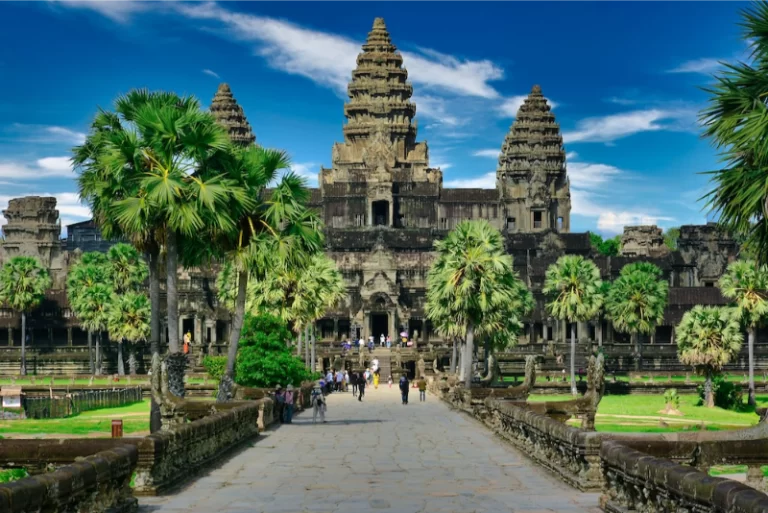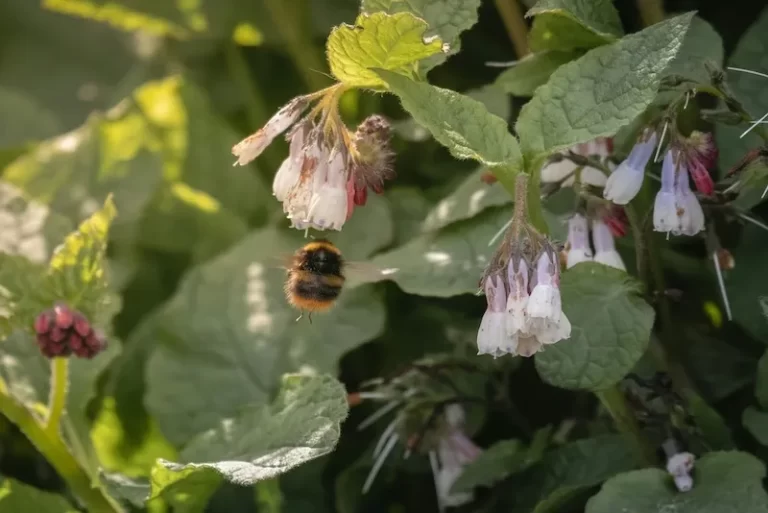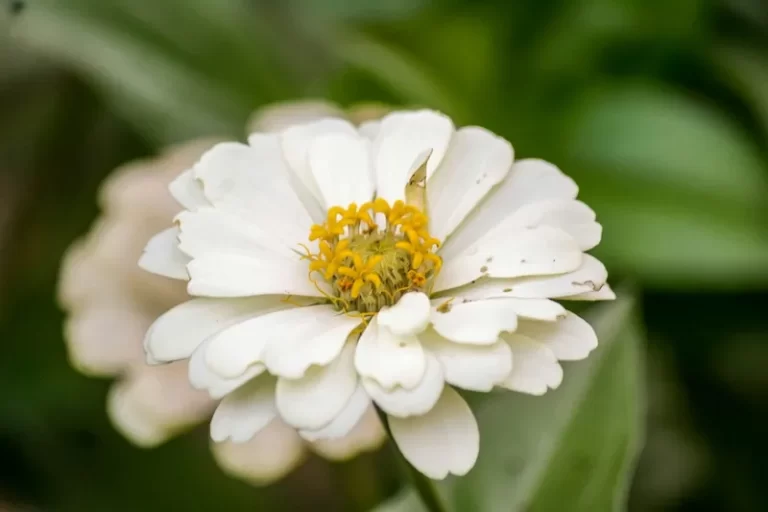Nature’s Hidden Treasures in Kampot

I love immersing myself in nature, wandering through the garden, spotting the different insects, birds, and trees that make up its vibrant tapestry. The thrill of uncovering hidden wonders is something I treasure. Living in Kampot, Cambodia feels like being in a true paradise, where the richness of nature is boundless and breathtaking.
Our world is brimming with endless wonders waiting to be uncovered. From the delicate, hidden connections that sustain ecosystems to the mysteries of the deep oceans, there is so much to explore. Let’s take a moment to marvel at the beauty around us and discover how interconnected and extraordinary life truly is. This journey of discovery, whether through the ecosystems of our gardens, the cosmos above, or the history that shaped our present, is a never-ending adventure that invites us to learn, grow, and marvel at the unseen forces that shape our world.
As we delve deeper into these wonders, we will explore the fascinating symbiotic relationships in nature, uncover the secrets of the stars, and uncover stories from the past that continue to influence the world today. Join me in embracing the mystery and magic that await us. Read more about the rich history of this amazing country called Cambodia and the stories that continue to shape its vibrant culture.
Five Wonders of Our World
Exploring the Hidden wonders that Shape Life

1. Dive into Nature’s Secrets
Learn about symbiotic relationships in ecosystems, like how fungi networks help trees communicate, a true “Wood Wide Web.”
2. Stargaze with Awe
The night sky reveals ancient light and celestial marvels. Apps or telescopes can guide you to discover planets, constellations, or meteor showers.
3. Explore Human Cultures
Every culture offers unique traditions, music, and cuisines, an endless source of inspiration and learning.
4. Uncover Local Histories
Dig into the stories of where you live. History often hides fascinating tales in plain sight.
5. Understand the Unseen
Microscopic worlds teem with life and structures beyond imagination, like the intricate patterns of snowflakes or diatoms.
Reflect on Cosmic Perspective
Realising our place in the vast universe inspires both humility and curiosity.
1. Dive into Nature’s Secrets
Symbiotic Relationships
Symbiotic relationships in ecosystems showcase how different species work together for mutual benefit, creating a harmonious balance in the natural world.
Fungi and Trees (The Wood Wide Web)–
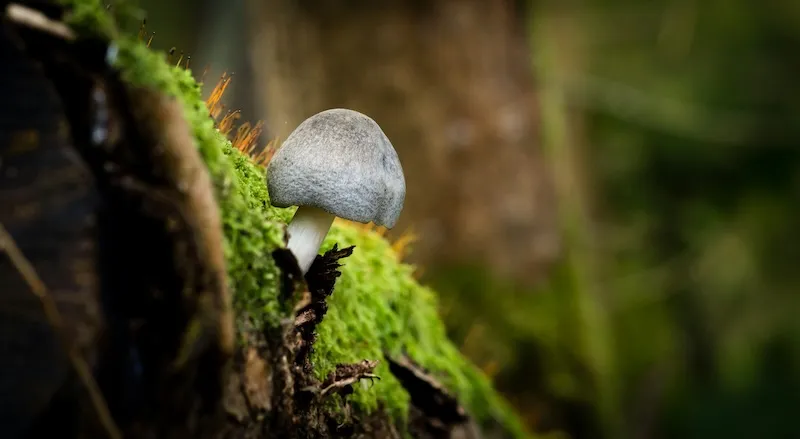
Beneath the forest floor, a vast network of fungal threads (mycorrhizae) connects tree roots, forming an underground web of communication and support. This incredible network allows trees to exchange nutrients, share water, and even warn each other of threats like pests or disease. Fungi play a vital role in sustaining the health of forests by breaking down organic matter and helping trees access essential minerals, making them indispensable to the ecosystem.
To explore more about the fascinating Wood Wide Web and how fungi and trees interact, here are some excellent resources–
- BBC Earth – “The Wood Wide Web”
BBC Earth provides a captivating introduction to how trees and fungi communicate. Their articles and videos explore the science behind the symbiotic relationships in forests. - TED – Suzanne Simard – “The Wood Wide Web”
A TED Talk by ecologist Suzanne Simard, who introduced the concept of the “Wood Wide Web.” This is an engaging way to learn more from a leading expert in forest ecology.
These sites provide accessible yet scientifically rich information, perfect for diving deeper into the world of fungi and trees.
Bees and Flowers–
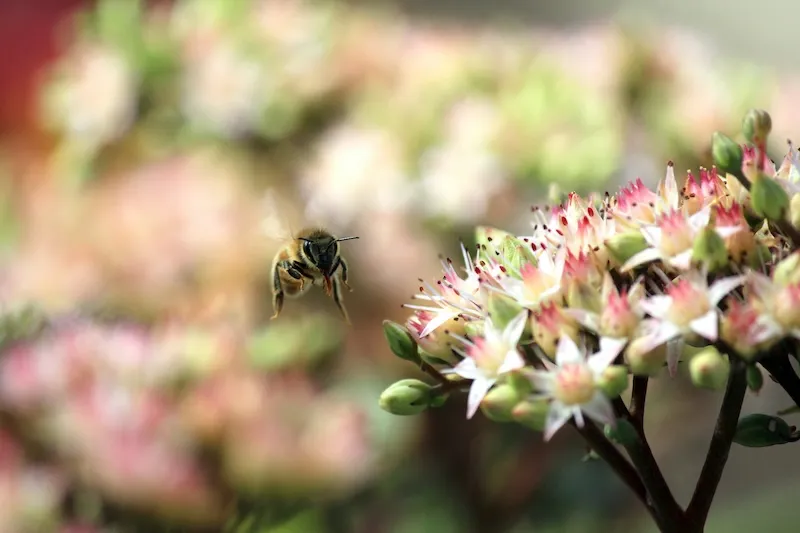
Bees gather nectar from flowers for nourishment, and in return, they pollinate the plants, ensuring their reproduction.
The relationship between bees and flowers is a beautiful example of mutualism, where both species benefit from the interaction. Here is how it works-
Bees and Flowers- A Symbiotic Relationship
Bees rely on flowers for nectar, which they collect and bring back to their hives to make honey. In the process, they unintentionally transfer pollen from one flower to another, aiding in the flower’s reproduction. This vital act of pollination helps plants produce fruits and seeds, ensuring their survival.
Why It Is Important
- For Bees– Nectar is their primary source of food, providing the energy they need to fly, work, and thrive.
- For Flowers– Pollination allows flowers to reproduce by transferring pollen between male and female parts, enabling them to produce seeds and fruits.
This relationship is crucial for biodiversity and the health of ecosystems, as many plants depend on bees for pollination. Bees, in turn, rely on flowers to sustain their colonies. This cooperation has been essential for the stability of plant life on Earth for millions of years. If we harm or lose the bees, we are jeopardising not only their survival but our own. The collapse of bee populations would disrupt food production, leading to a ripple effect on global ecosystems, and ultimately affecting human life. The delicate balance of nature reminds us that every species plays an irreplaceable role.
To learn more about this remarkable interaction, consider these resources-
- RHS – “How Bees Help Pollinate Plants“
A detailed guide on how bees pollinate and the role they play in sustaining plant life. - National Geographic – “World bee day”
An article exploring the importance of bees in the ecosystem, particularly their role in pollinating flowers and crops. - Pollinator Partnership – “About Pollination”
This nonprofit provides excellent resources on how bees and other pollinators impact the environment and agriculture.
These resources will help you gain a deeper understanding of the indispensable role bees play in our world and the symbiotic relationship they share with flowers.
Clownfish and Sea Anemones- A Protective Partnership

Clownfish seek shelter among the tentacles of sea anemones, gaining protection, while the anemones benefit from the clownfish’s assistance in cleaning and attracting prey. This mutualistic relationship beautifully illustrates the interdependence found in nature.
Clownfish, with their bright orange and white colouring, often swim in and around sea anemones, large marine creatures with stinging tentacles. While it might seem dangerous for a fish to live among these tentacles, clownfish have evolved to withstand the stings due to a special mucus coating on their skin, which protects them from the anemone’s venom.
How the Symbiosis Works–
For the Clownfish–
The sea anemone provides a safe haven from predators, as its tentacles can sting and paralyze any potential threats. This protection allows the clownfish to stay safe from larger, more aggressive fish.
For the Sea Anemone–
In return, clownfish help by cleaning the anemone, removing debris, parasites, and small organisms. Additionally, clownfish attract other fish to the anemone, which the anemone can catch and eat.
This symbiotic relationship benefits both species, the clownfish enjoys protection and access to food, while the anemone gains cleaning services and extra food sources.
To Learn More About This Fascinating Relationship–
- National Marine sanctuary Foundation – “Sea Anemone and Clownfish
A great introduction to the mutualistic relationship between clownfish and sea anemones, explaining how they interact in the wild. - National Geographic- “Symbiosis between Clownfish and Sea Anemones”
The symbiotic relationship between an anemone (Heteractis magnifica) and a clownfish (Amphiron ocellaris) is a classic example of two organisms benefiting the other.
These resources provide a closer look at this unique relationship, highlighting how nature fosters harmony through mutual support and adaptation.
2. Stargaze with Awe

The night sky is a mesmerizing display of ancient light and celestial wonders, offering a glimpse into the vastness of the universe. Stars, planets, and constellations shine down on us, each with its own story, holding countless secrets waiting to be uncovered. Whether you’re gazing at the moon or tracking the movement of distant planets, there’s always something new to discover.
Discovering the Night Sky-
Planets-
Apps and telescopes can help you identify planets like Venus, Jupiter, or Mars as they glide through the sky. These planets often shine brightly and are easily visible to the naked eye, or with the aid of a simple telescope.
Constellations-
The stars form intricate patterns in the sky, known as constellations. From the familiar Big Dipper to the more elusive Orion, stargazing apps can guide you to identify these formations, each with its own mythological history.
Meteor Showers–
Meteor showers are a breathtaking natural spectacle, where dozens or even hundreds of meteors streak across the sky. Popular meteor showers like the Perseids in August or the Geminids in December offer a chance to witness nature’s fireworks.
Tools for Stargazing–
- Stellarium–
A free, open-source software that lets you view the night sky from any location on Earth. It’s a powerful tool for stargazing, offering accurate star maps and planet tracking. - SkySafari–
A popular app that allows you to easily identify stars, planets, and constellations, and track their movements in real time.
The night sky is full of wonders waiting for you to explore. With the right tools and a bit of curiosity, you can unlock the mysteries of the stars and beyond. The universe invites us to connect with its cosmic beauty and understand our place within it.
3. Explore Human Cultures
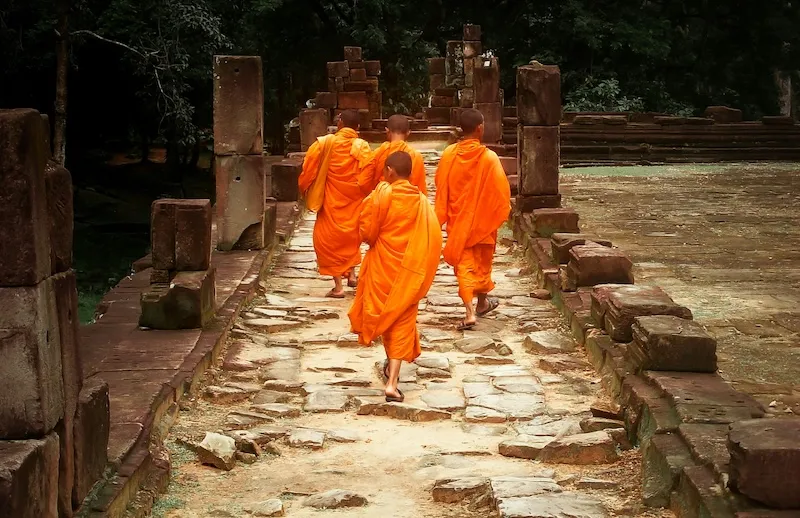
Exploring human cultures, like that of Cambodia, opens up a world of unique traditions, histories, and experiences that shape the way people live, think, and connect with each other. Each culture offers a deep well of knowledge and beauty, from its art to its customs, rituals, and way of life. Cambodia, in particular, is a country rich in cultural heritage, with a fascinating blend of ancient traditions and modern influences.
Discovering Cambodian Culture–
- Angkor Wat and Ancient Temples–
One of the most iconic symbols of Cambodian culture is the Angkor Wat temple complex, a UNESCO World Heritage Site. Built in the 12th century, it is the largest religious monument in the world and a stunning example of classical Khmer architecture. The temples of Angkor are filled with intricate carvings and stone structures, telling the stories of ancient Cambodian mythology and history. Visitors can marvel at these ancient ruins while learning about the kingdom’s rich past. - Cambodian Cuisine–
Cambodian food reflects the country’s agricultural heritage and influences from neighbouring countries. Popular dishes include amok (a coconut milk curry), lok lak (stir-fried beef with rice), and nom banh chok (a traditional noodle dish). Cambodia’s food culture is rich in herbs and spices, with rice being a staple in almost every meal. Street food is also an important part of the culture, with vendors selling everything from grilled meats to sweet treats. - Traditional Dance and Music–
Cambodian traditional dance is highly stylised, with performances often telling stories from Cambodian mythology or historical events. One of the most famous is the Apsara Dance, a graceful and elaborate performance that dates back to the Khmer Empire. The intricate hand gestures and body movements represent various deities, spirits, and animals. Music plays an equally important role in Cambodian culture, with traditional instruments like the tro (a stringed instrument) and the roneat (a type of xylophone) creating melodies that accompany dances and ceremonies. - Festivals and Religious Celebrations–
Cambodia’s festivals are deeply rooted in Buddhist and traditional practices. One of the most important celebrations is the Water Festival (Bon Om Touk), which marks the reversal of the Tonle Sap River’s flow and celebrates the end of the rainy season. Other key celebrations include the Khmer New Year (Chaul Chnam Thmey), which is celebrated with family gatherings, feasting, and traditional games, and Vesak, the Buddhist holiday celebrating the birth, enlightenment, and death of the Buddha. - Family and Community Life–
Cambodian culture places great emphasis on family and community. Extended families often live close together, and elders are highly respected. Buddhism is the predominant religion, shaping many of the country’s traditions and daily life. Temples are places of worship, and monks play a key role in guiding the spiritual life of the community. - Handicrafts and Art–
Cambodian artisans are known for their intricate craftsmanship in silk weaving, silverwork, stone carving, and wooden sculptures. Traditional art often depicts religious themes or scenes from daily life. These handcrafted goods are not only a source of income but also a vital way to preserve the cultural heritage and craftsmanship passed down through generations.
Exploring Cambodian Culture-
To truly appreciate Cambodian culture, you can visit cultural sites, attend festivals, or try your hand at Cambodian cooking or arts. There are many books, documentaries, and websites dedicated to preserving and sharing Cambodia’s rich cultural legacy. Here are a few resources for diving deeper into Cambodian culture-
- UNESCO – Angkor
Learn more about the history and preservation of Angkor Wat and other Cambodian cultural heritage sites. - The Phnom Penh Post-
An English newspaper that covers Cambodian culture, news, and local events.
Exploring Cambodia’s culture, or any culture for that matter, is a way to connect with the humanity that binds us all, appreciating the diversity and shared experiences that enrich our world.
4. Uncover Local Histories
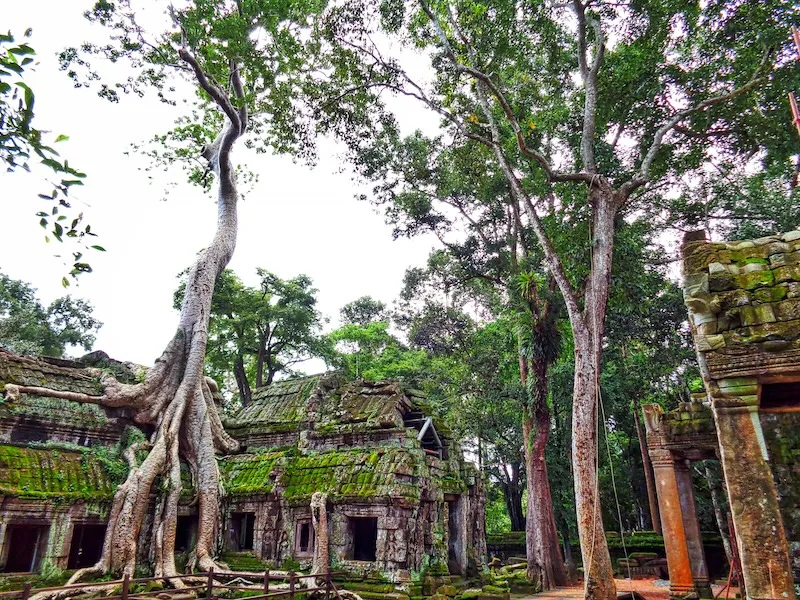
Uncovering Local Histories is a powerful way to connect with the past, learn about the origins of a place, and understand the people who shaped it. Every location, no matter how small, holds its own fascinating history, filled with stories, struggles, and triumphs. By exploring local histories, you can uncover the rich layers that form the identity of a community or region.
Why Local Histories Matter – Especially in Cambodia
Local histories help us appreciate the traditions, architecture, and values of a community. They provide context for modern-day life, offering insight into how previous generations lived, what they valued, and the challenges they faced. Additionally, uncovering local histories fosters a sense of belonging, helping individuals connect with the place they live, whether it is a small village or a bustling city.
In the case of Cambodia, local histories carry particular significance, especially in the context of the Khmer Rouge regime. The atrocities committed during this period remain one of the most devastating chapters in the country’s history, yet the global awareness of this tragedy is often overshadowed by events like the Vietnam War, which played a role in the rise of the Khmer Rouge. By understanding Cambodia’s local history, we not only honour the lives lost during this dark time but also gain a deeper appreciation of the resilience and recovery that the nation continues to undergo.
Here are a few ways to begin uncovering the history of your local area-
1. Visit Local Museums and Cultural Centres
Museums and cultural centres often house artifacts, photographs, and documents that provide insight into the local past. These institutions frequently offer exhibitions and events that highlight important historical moments and figures in the region’s development.
2. Research Oral Histories
One of the most direct ways to uncover local history is through the stories of the people who lived through it. Older generations often hold the key to local legends, personal accounts, and knowledge that may not be found in books or official records. Conducting interviews with long-time residents or visiting community centres where people gather can yield fascinating insights.
3. Explore Historical Landmarks and Monuments
Many towns and cities have landmarks, monuments, or statues that commemorate important historical events or individuals. These physical markers can provide valuable clues to the past and prompt further research into the events they represent.
4. Learn About the Indigenous History of the Region
Understanding the history and culture of indigenous peoples is essential to grasping the full history of a location. Many indigenous groups have preserved their stories, traditions, and languages through generations, and learning about them is a key part of appreciating the local history.
5. Delve into Local Newspapers and Publications
Historical newspapers and periodicals are a rich source of information about the past. They offer first-hand accounts of events, people, and everyday life from specific points in time. Many libraries and online databases provide access to digitised versions of old newspapers, making it easier than ever to research local history.
6. Local Folklore and Legends
Local folklore can provide unique insights into the beliefs, fears, and values of a community. Many regions have myths or legends passed down through generations that reflect the cultural heritage of the area. Whether through stories of mythical creatures, historical figures, or supernatural events, folklore connects us to the imagination and collective history of the people.
7. Engage with Local History Groups or Societies
Many communities have local history groups or societies dedicated to preserving and sharing the area’s history. These groups often have archives, host talks, and even organise events and projects that encourage community involvement in uncovering and preserving local heritage.
By embracing local histories, we not only learn more about the events that shaped our present but also strengthen our connection to the places we call home. In Cambodia, understanding the past,from the rise of the Khmer Rouge to the cultural vibrancy before and after, helps honour the nation’s rich heritage and ensures that the lessons of history are never forgotten.
Resources for Uncovering Local Histories–
Uncovering local histories is an enriching journey that can connect us with the past in meaningful ways. Here are some resources to help you get started-
- British Library – Local History The British Library offers a range of historical documents and collections that delve into British local history. Whether you’re looking for old maps, photographs, or documents related to specific regions, the library provides invaluable tools for exploring local histories.
- National Trust – Local Heritage While primarily focused on the UK, the National Trust is dedicated to preserving the history of specific areas through conservation of buildings, landscapes, and cultural landmarks. Their website offers rich insights into how local heritage can be maintained and celebrated.
- Britannica – history of Cambodia, a survey of the important events and people in the history of Cambodia.
While many resources are available in the UK and elsewhere, Cambodia’s local history is often best uncovered through the people themselves. The Khmers are known for their strength and determination, particularly in the wake of the devastating genocide.
Unlike some communities, they often prefer to focus on the present rather than dwell on painful pasts. This resilience is a core part of their identity. Many Cambodians may not be eager to revisit their tragic history, not because they’ve forgotten it, but because they wish to live fully in the present rather than seek revenge or remain trapped in the past. Therefore, when seeking to understand Cambodia’s history, it is essential to approach it with sensitivity and respect for how the people choose to remember and move forward. However, speaking with local elders or historians can offer unique personal accounts of Cambodia’s complex past.
By engaging with these resources and connecting with local people, we can begin to unravel the fascinating histories that shape our communities, wherever we are in the world. Understanding and preserving these histories deepens our connection to the places we live and ensures that these stories are passed down for future generations, creating a richer, more empathetic understanding of our shared human experience.
5. Understand the Unseen

Understanding the Unseen invites us to explore the hidden worlds that exist beyond our direct perception. Worlds that, although invisible to the naked eye, are integral to the functioning of life on Earth. This includes everything from the microscopic life that teems in soil and water to the unseen forces shaping the natural world, like gravity and electromagnetic fields. By delving into the unseen, we can gain a deeper appreciation for the complexity of life and the interconnections that sustain it.
1. The Microbial World
Microorganisms, such as bacteria, fungi, and viruses, form the foundation of life on Earth. Though too small to see without a microscope, these tiny organisms play crucial roles in ecosystems, health, and the environment.
- Soil Microbes– In soil, microbes help decompose organic matter, cycle nutrients, and maintain soil health. Without these microorganisms, plants wouldn not receive the nutrients they need, and ecosystems would collapse.
- Gut Microbiome– Inside our bodies, trillions of microorganisms live in our gut, aiding in digestion, synthesising vitamins, and even influencing our mood and immune system. Understanding the microbiome has led to breakthroughs in health and medicine, as it is increasingly recognised as a vital part of human well-being. As we are what we eat.
- Ocean Microbes-The oceans are teeming with microscopic life, including plankton and bacteria, which form the basis of the marine food web and play a vital role in regulating Earth’s climate.
2. Quantum Physics- The World Beyond the Visible
At the microscopic level, the principles of quantum physics govern the interactions of particles and energy. These forces operate far beyond what we can perceive with our senses but influence everything around us.
- Quantum Particles– Subatomic particles, such as electrons and quarks, behave in ways that defy classical physics. They can exist in multiple states at once (superposition) or be “entangled” with particles at vast distances, a phenomenon that Einstein famously called “spooky action at a distance.”
- Wave-Particle Duality– At the quantum level, particles like light and electrons can behave both as waves and particles, depending on how they are observed. This phenomenon challenges our conventional understanding of reality and opens up new realms of scientific exploration.
3. The Power of Sound and Vibrations
Sound waves are vibrations that travel through air, water, or solid objects. While we hear sounds within a certain frequency range, there are sounds beyond the range of human hearing, known as ultrasound and infrasound.
- Ultrasound-Frequencies higher than 20,000 Hz are used in medical imaging, such as in ultrasound scans, which allow doctors to observe the inside of the body without invasive procedures. Ultrasound is also used by animals like bats and dolphins for echolocation.
- Infrasound– Frequencies below 20 Hz can travel long distances and are often imperceptible to the human ear. Some animals, like elephants, communicate using infrasound, while humans can experience the effects of infrasound through feelings of discomfort or unease.
4. The Invisible Forces of Nature
There are numerous forces in nature that shape our world, yet remain invisible to the naked eye. These include magnetic fields, gravitational waves, and electromagnetic radiation.
- Magnetic Fields– Earth’s magnetic field, which protects us from harmful solar radiation, is invisible but critical to life on Earth. Many animals, such as birds and sea turtles, rely on the Earth’s magnetic field for navigation during migration.
- Gravity– The force that keeps everything grounded, from falling apples to orbiting planets, is another invisible force that shapes our universe. Though we can not see gravity, its effects are all around us, influencing everything from the rise and fall of tides to the motion of the planets.
- Electromagnetic Radiation– While visible light is just one part of the electromagnetic spectrum, it is only a tiny fraction of what’s out there. Beyond visible light, there are radio waves, microwaves, infrared radiation, ultraviolet radiation, X-rays, and gamma rays, all of which carry energy and have important applications, from medical imaging to wireless communication.
5. The Mystery of Dark Matter and Dark Energy
One of the greatest unsolved mysteries in modern physics involves the unseen universe, particularly dark matter and dark energy. Although they cannot be observed directly, scientists know they exist because of their effects on visible matter.
- Dark Matter– Scientists estimate that about 85% of the universe’s mass is in the form of dark matter, which does not emit, absorb, or reflect light. Its presence is inferred by its gravitational effects on visible matter, such as galaxies and galaxy clusters.
- Dark Energy– Even more mysterious, dark energy is thought to make up around 70% of the universe’s energy content. It appears to be responsible for the accelerated expansion of the universe, but its nature remains a subject of intense research.
6. The Life of Plants and Trees
Plants are highly complex organisms, yet many of their functions remain unseen. Their communication, growth processes, and reactions to environmental factors often occur without our awareness.
- Mycorrhizal Networks– Beneath the forest floor, fungi form vast networks that connect the roots of trees and plants. These networks, often referred to as the “Wood Wide Web,” allow plants to exchange nutrients, share resources, and even warn each other of threats, such as disease or pest infestations.
- Root Communication– Trees and plants communicate through their roots, using chemical signals to alert others about environmental changes, drought conditions, or pest attacks.
Resources to Understand the Unseen-
- Live Science – The Invisible World: All About Microbes
Learn about the microscopic organisms that shape our world and ecosystems. - PBS – Quantum Mechanics – Part 1: Crash Course
A beginner’s guide to understanding quantum physics, including the concepts of wave-particle duality and quantum entanglement.
By exploring the unseen forces and worlds around us, we can gain a greater understanding of the complex systems that sustain life, the mysteries of the cosmos, and the invisible yet vital connections that make our world work.
Takeaway
A Personal Reflection
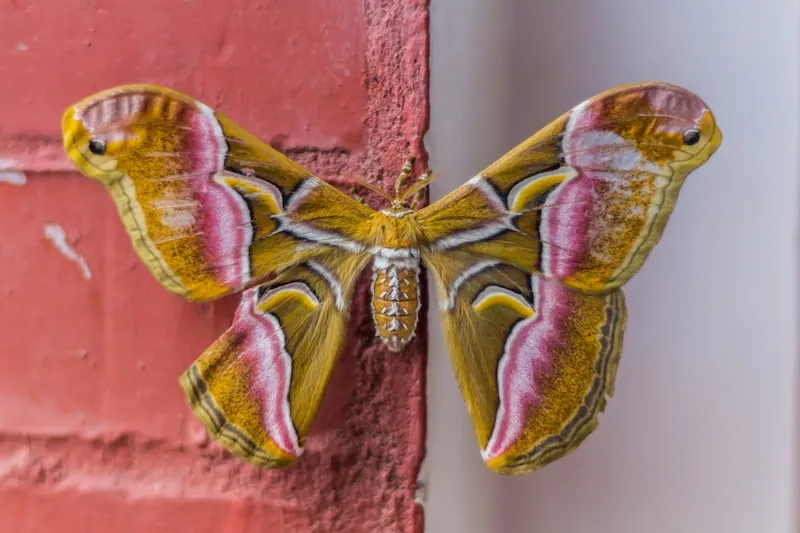
As I immerse myself in the mysteries of the world, whether it is observing the intricate relationships between creatures in my garden or pondering the vastness of the cosmos, I can not help but feel a deep sense of wonder. These unseen forces and worlds, from the microscopic to the cosmic, remind me of the interconnectedness of all things. Just as the trees in the forest communicate beneath the soil or the stars above guide our path, the invisible worlds that surround us shape our daily lives in ways we often can not see.
For me, understanding these forces is not just about curiosity, it is about connecting to something greater than ourselves. It is a humbling reminder that, no matter how much we learn, there is always more to discover. The beauty of life lies in the exploration, the questions, and the wonders that are waiting to be unveiled.
Uncovering local histories is not just about the past, it is about understanding the present. By learning about the stories that have shaped the world around us, we can build a deeper connection with our surroundings and gain a richer perspective on the challenges and triumphs of those who came before us. Whether you are visiting historical sites, reading old records, or speaking with community members, exploring local history is an enriching way to learn and grow.
If you are curious about the rich history of Cambodia, a country full of culture, resilience, and beauty, you can read more in my post The History of One Amazing Country Called Cambodia. Discover the fascinating journey of this remarkable nation, from its ancient kingdoms to its modern-day evolution.
What is something new you would love to learn about or share with others?


